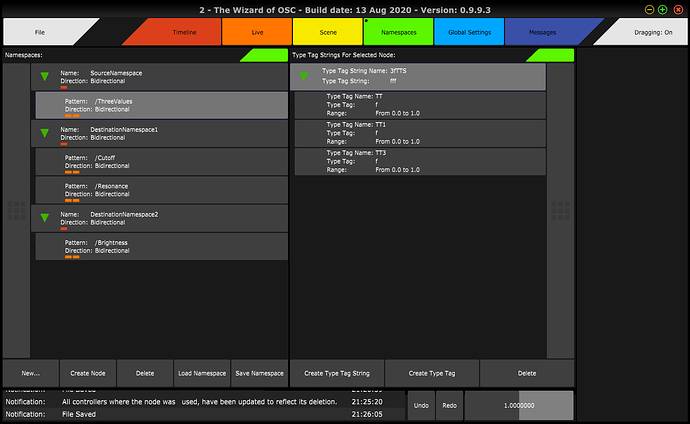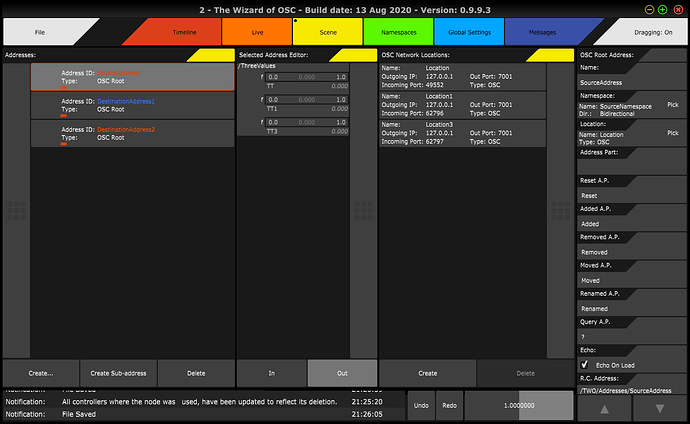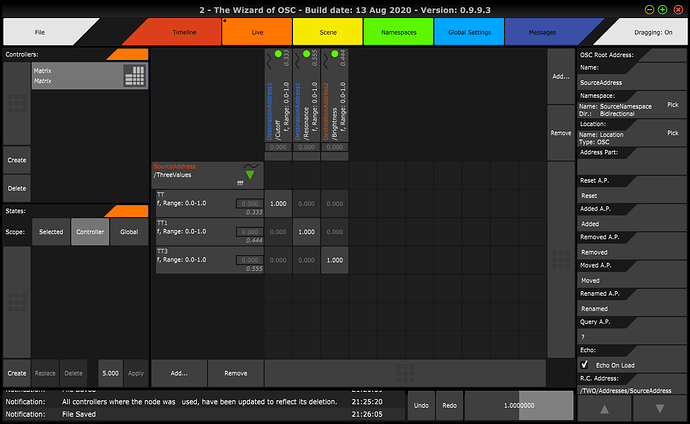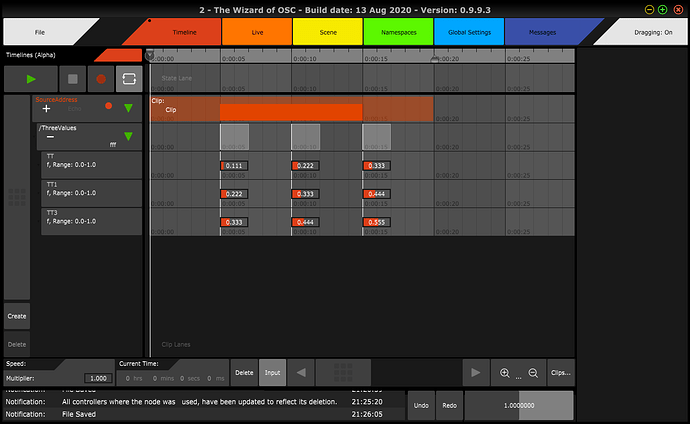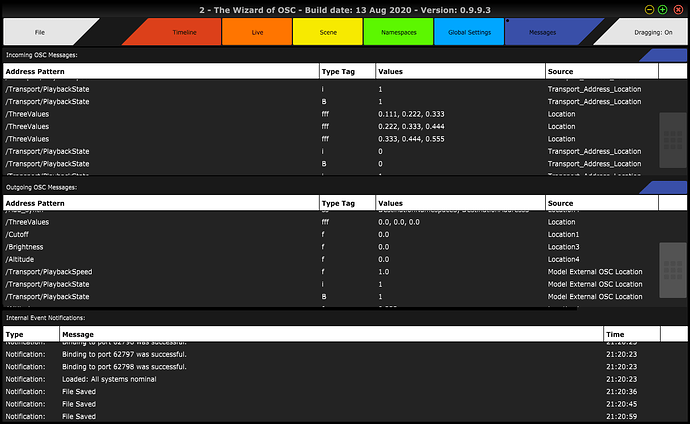Hey all! I have one address carrying 3 floats simultaneously and would like to split it into 3 different addresses each with 1 of the floats. Thanks in advance!
Hi Cedric, thanks for joining!
I’ve attached a simple .two file where I do what you describe.
The OSC Address Patterns IP’s and ports are generic, but if you need a hand with putting in your specific values post back what those are and I’ll be happy to make that specific example for you!
I made the below extra verbose for it to be clear, really this all should take 2 minutes to set up once you’re familiar with your software.
First thing I did was create the 3 namespaces, one for the source and 2 for the destinations - here I assume two targets are in one destination, and another in a second destination, to show that is possible:
If all destinations are within the same namespace, that’s possible too.
Then I created 3 “Addresses”, which use these Namespaces:
I associated each with a separate “Location”, I.E. IP and Port pair, so that each of the 3 could be a separate application, or device even.
This might not be your case, then you just reduce the number of locations to what you need, and assign them to the Addresses in each Address’ property panel.
Finally, to achieve what you need, I created a “Matrix” Controller in the Live Tab:
In that I added the source, and the three targets from the two different destination “Addresses”.
Each non-zero cell, multiplies the value coming to it from the source with its content, and sends it to the destination. Here I just added three 1.0’s, but you could make much more complex setups. (Right clicking cells toggles between 0 and 1).
Now you’re ready for live use!
As a bonus, I added a small clip in the Timeline Tab, sending values in when playback is started:
The messages on the “Input” timeline lanes are treated exactly as if they were received from the outside (and can be recorded when received too), making this a very useful testing feature, you can just leave a recorded loop playing and go ahead designing the rest of your setup with the recording simulating real data coming in.
FYI, for testing purposes, you can look at messages come in and go out, in the Messages tab:
That is all, please find the file attached to this post!
Best,
Ilias B.
Cedric_1.zip (3.0 KB)
